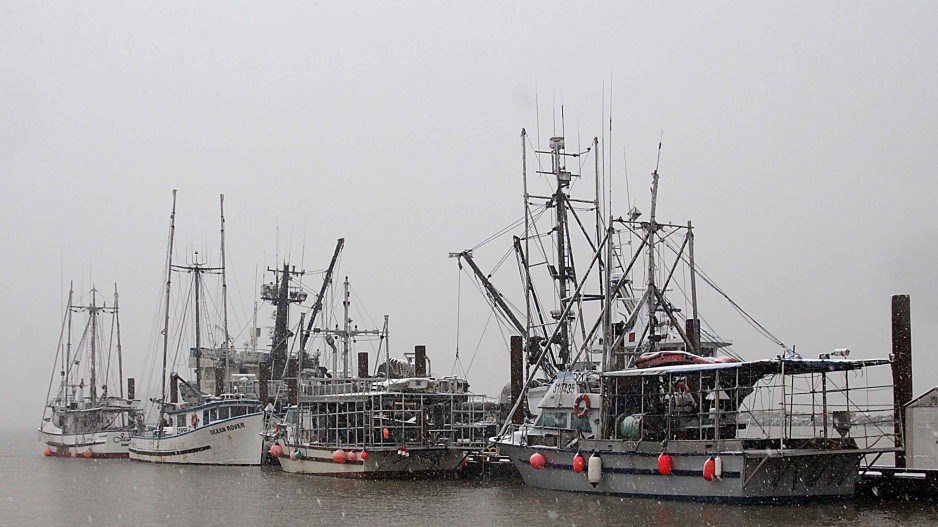B.C. commercial fisherman, who had hoped for a green light today, now have to wait until next week for a go-ahead to fish for Fraser River sockeye, while American commercial fishermen are already catching sockeye.
“They’re fishing on the American side, but we’re not fishing on the Canadian side,” said Mitch Dudoward, a commercial fisherman and spokesperson for the UFAWU-Unifor fishermen’s union.
Returns so far appear to be healthy enough for a commercial opening this year, and fisherman had expected commercial openings to be announced today. But they now have to wait until Tuesday.
The fear is that they will miss an abundance of summer run sockeye, which are returning in fairly good numbers.
"The longer we wait, the less likelihood there will be an opportunity to fish," said Dawn Webb, an organizer for UFAWU-Unifor. "We should be fishing right now."
There are concerns that the late summer run, made up by the traditionally large Adams River sockeye stock, are either late or will not come in at the predicted run sizes.
As of Thursday, roughly 7 million Fraser River sockeye were forecast to return this year, according to the Pacific Salmon Commission (PSC), which would be a big improvement over the previous three years, but lower than the last three abundance years, which occur every four years.
Fisheries and Oceans Canada is adopting a more conservative run size of 6.2 million for Fraser River sockeye.
As of Thursday, 2 million sockeye had made it past Mission, the PSC reports. The latest in-season forecast, based on salmon counts and test fisheries, is for 627,000 early summer sockeye, 4.4 million summer, and 2 million late summer.
The pre-season forecast was for 9.7 million Fraser River sockeye, 3.7 million of which were expected to be Adams River late summer stock.
There is always the chance that the late summer run is just extra late. But a high-seas expedition conducted in the Gulf of Alaska over the winter caught so few Adams River sockeye that scientists with the expedition warned the PSC that this year’s late summer returns might be much lower than expected. The Adams River sockeye are typically the most abundant.
But this year's sumnmer run numbers appear to be robust, leaving commercial fishermen wondering why they haven't been given the go-ahead to fish.
"The longer we wait to fish, the less opportunity there is to harvest on the abundant summer stocks that are currently available to us," the UFAWU-Unifor said in a bulletin.
Meanwhile, the Skeena River had one of its best returns for sockeye in many years – 4.1 million, according to the UFAWU-Unifor.
But commercial fishermen were allowed to catch only 650,000 salmon, less than 20% of a Total Allowable Catch (TAC), as the Skeena salmon fishery was shut down to commercial fishing on August 8 – prematurely, according to the UFAWU-Unifor.
"We had a 40% harvest (allocation), and we were well below half of that," Webb said.
If in-season forecasts are right, and Fraser River sockeye come in at 6 million to 7 million this year, it would be better than the previous three years, but relatively low for an abundance year.
Fraser River sockeye have historically returned in greater abundance once every four years, with the Adams River stock accounting for a good share of the numbers.
There were 28 million Fraser Sockeye returns in 2010, 19 million in 2014, and 11 million in 2018.
Last year’s returns for Fraser River sockeye were 2.5 million. The returns for 2020 were the lowest on record – just 398,000 – and 2021 was also dismal, with just 590,000 returns.




